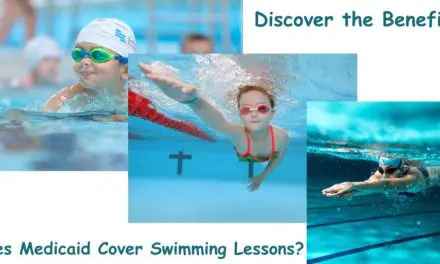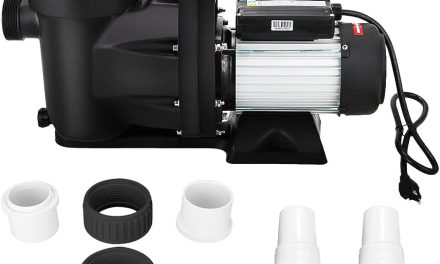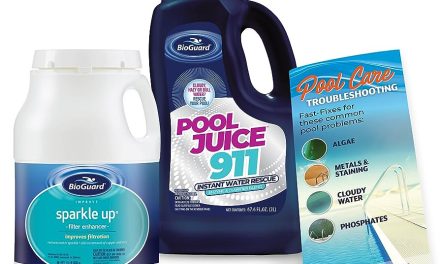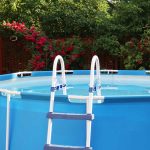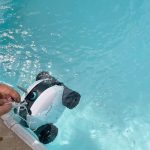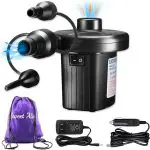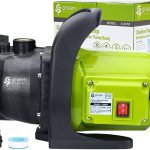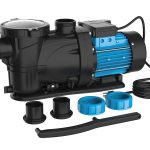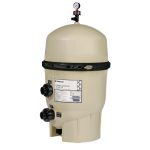To be a good swimmer, focus on technique and consistency. Start by learning proper breathing and stroke technique, and practice regularly to build strength and endurance in the water.
Swimming is a popular and refreshing exercise that offers numerous health benefits. Whether you’re a beginner or looking to improve your swimming skills, becoming a good swimmer requires dedication and practice. We will provide you with valuable tips and techniques to help you become a proficient swimmer.
From mastering the basics of breathing and stroke technique to building endurance and strength in the water, we will guide you through the steps to becoming a confident and successful swimmer. So, grab your swimsuit and dive into the world of swimming as we unravel the secrets to becoming a good swimmer.
Understanding The Fundamentals
Discover the essential fundamentals of becoming a proficient swimmer. Learn the key techniques and skills needed to excel in the water, allowing you to become a confident and capable swimmer.
Swimming is a fantastic sport and a skill that can be enjoyed by people of all ages. Whether you’re a beginner or looking to improve your technique, understanding the fundamentals is crucial. In this section, we will explore the importance of proper body position, developing a strong core, and mastering the art of breathing while swimming.
Importance Of Proper Body Position In Swimming:
- Correct body position is essential for efficient swimming and can make a significant difference in your performance.
- It helps reduce drag in the water, allowing you to move faster and with less effort.
- To achieve the correct body position, focus on the following key points:
- Keep your head in line with your spine, looking down toward the bottom of the pool.
- Ensure that your hips are close to the surface of the water, as a dropped hip can cause your legs to sink and create resistance.
- Keep your body aligned and straight, making sure your shoulders are level and not twisted.
Developing A Strong Core For Improved Technique:
- A strong core is essential for stability, balance, and efficient swimming technique.
- It helps to maintain the correct body position and allows for better propulsion through the water.
- Focus on exercises that target your core muscles, such as:
- Planks: This exercise strengthens your abdominal, back, and shoulder muscles, which are all crucial for swimming.
- Russian twists: This exercise engages your oblique muscles, improving your rotational power in the water.
- Flutter kicks: By strengthening your lower abdominals, this exercise enhances your leg movements while swimming.
Mastering The Art Of Breathing While Swimming:
- Proper breathing technique is vital to maintaining a steady rhythm and minimizing fatigue while swimming.
- It’s important to breathe smoothly and regularly, coordinating your breath with your body movements.
- Follow these tips to improve your breathing technique:
- Exhale steadily into the water while your face is submerged, then quickly inhale when you turn your head to breathe.
- Focus on breathing out fully underwater to avoid accumulating carbon dioxide in your lungs.
- Practice bilateral breathing (breathing on both sides) to maintain balance and improve your overall swimming stroke.
By understanding and practicing these fundamentals, you can become a proficient swimmer. Remember to maintain correct body position, develop a strong core, and master the art of breathing while swimming. Embrace these fundamentals, and you’ll be well on your way to becoming a confident and skilled swimmer.
Perfecting Your Stroke Techniques
Mastering the art of swimming requires honing your stroke techniques. Discover the secrets to becoming a proficient swimmer with expert tips and advice to enhance your skillset in the water.
Swimming is not just about jumping in the water and moving your arms and legs. To be a good swimmer, you need to perfect your stroke techniques. By analyzing different swimming strokes, enhancing arm movement and coordination, and developing effective leg kicks for propulsion, you can improve your swimming skills significantly.
Analyzing Different Swimming Strokes:
- Freestyle stroke: This stroke involves alternating arm pulls with a flutter kick. It is the fastest and most commonly used stroke.
- Backstroke: In the backstroke, you lie on your back and perform a flutter kick while your arms move in a circular motion.
- Breaststroke: This stroke requires simultaneous movements of arms and legs in a symmetrical pattern.
- Butterfly stroke: The butterfly stroke demands a wave-like body motion, with simultaneous arm pulls and a dolphin kick.
Enhancing Arm Movement And Coordination:
- High elbow position: Keep your elbows high during the pull phase to maximize your pulling power.
- Proper hand entry: Enter the water with your fingertips first, ensuring a smooth and efficient entry.
- Strong catch and pull: Focus on generating power by catching and pulling back water with a strong arm movement.
- Controlled recovery: Maintain control and streamline your arm movements during the recovery phase for minimal drag.
Developing Effective Leg Kicks For Propulsion:
- Flutter kick: Execute a rhythmic flutter kick by kicking from the hips, keeping your legs straight but relaxed, and using small, quick motions.
- Dolphin kick: Master the undulating dolphin kick by engaging both your hips and core, while allowing your legs to move in a fluid motion.
By paying attention to each stroke’s nuances and practicing the associated techniques, you can enhance your swimming abilities. Remember to adhere to proper arm movements, coordination, and leg kicks to improve your efficiency, speed, and overall swimming performance. So dive in, practice these techniques, and become a better swimmer with each stroke.
Improving Speed And Endurance
Improve your speed and endurance to become a skilled swimmer with these effective techniques. Master proper techniques, engage in regular training, and focus on building strength and stamina for optimal performance in the water.
Incorporating Interval Training Into Your Swimming Routine
- Interval training is an effective way to improve your swimming speed and endurance.
- It involves alternating between high-intensity swimming and periods of rest or low-intensity swimming.
- By pushing your body to exert more effort during the high-intensity intervals, you can increase your cardiovascular fitness and stamina.
- Here are some tips for incorporating interval training into your swimming routine:
- Start by including short bursts of high-intensity swimming followed by longer periods of rest or low-intensity swimming.
- Gradually increase the duration and intensity of the high-intensity intervals as your fitness level improves.
- Use a stopwatch or a swim tracker to time your intervals and monitor your progress.
- Mix up your intervals with different strokes and drills to challenge your body in different ways.
- Don’t forget to warm up and cool down before and after your interval training sessions to prevent injuries.
Building Cardiovascular Fitness For Greater Endurance
- Building cardiovascular fitness is essential for improving your endurance as a swimmer.
- By strengthening your heart and lungs, you can swim for longer periods without feeling fatigued.
- Here are some strategies to help you build cardiovascular fitness:
- Engage in other aerobic activities such as running, cycling, or rowing to complement your swimming workouts.
- Incorporate longer distance swims into your training routine, gradually increasing the distance over time.
- Include interval training and high-intensity workouts to challenge your cardiovascular system.
- Consistency is key – aim for regular swimming sessions to build up your cardiovascular fitness gradually.
- Monitor your heart rate during workouts to ensure you’re training at the appropriate intensity.
Fine-Tuning Your Swim Technique To Increase Speed And Efficiency
- Improving your swim technique is crucial for enhancing both your speed and efficiency in the water.
- Here are some techniques to help you fine-tune your swim technique:
- Focus on body position: Maintain a horizontal body position, keeping your head in line with your spine, and engage your core muscles.
- Streamline your stroke: Minimize drag by keeping your body aligned and extending your arms as far forward as possible.
- Efficient breathing: Practice rhythmic breathing, exhaling underwater and inhaling at the appropriate time during your stroke.
- Develop a strong kick: Work on strengthening your leg muscles and perfecting your kick technique to propel yourself forward efficiently.
- Seek feedback: Consider working with a swim coach who can provide guidance and correct any technique flaws.
Remember, consistently implementing these strategies and dedicating time to improve your speed and endurance will help you become a better swimmer. Enjoy the process and embrace the challenges!

Credit: www.splitreed.com
Conclusion
Mastering the art of swimming is a journey that requires persistence, determination, and practice. By following the tips and strategies outlined in this blog post, you can become a skilled and confident swimmer. Remember to always warm up before your swim, practice proper breathing techniques, maintain a balanced body position in the water, and focus on efficient strokes.
Keep in mind that consistency is key, so aim to swim regularly and gradually increase the intensity and duration of your workouts. Don’t be discouraged by setbacks or challenges along the way; every swimmer faces them. Embrace them as opportunities for growth and continue to push yourself.
With time and dedication, you’ll not only improve your swimming skills but also unlock the many physical and mental benefits that swimming offers. So dive in, stay focused, and enjoy the journey of becoming a good swimmer!




